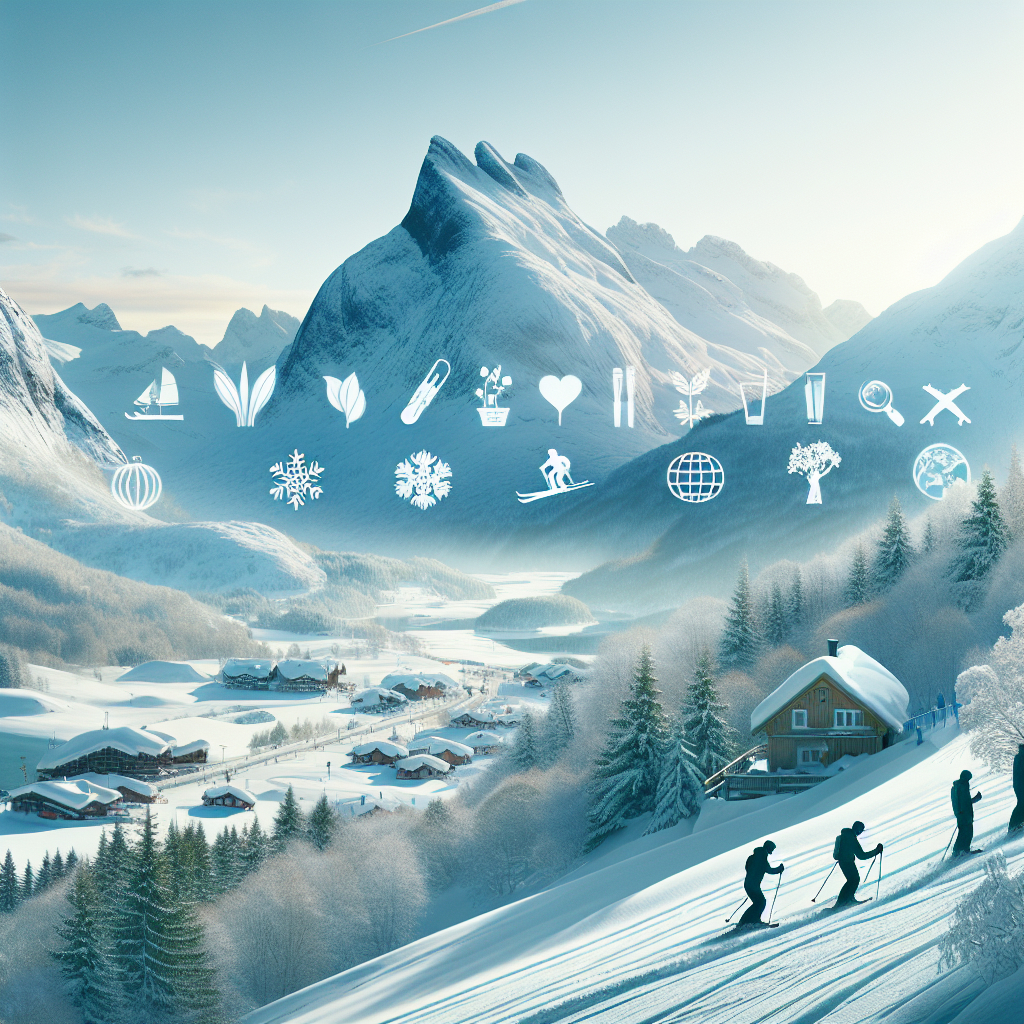
Skiing is a beloved winter sport in Norway, attracting both locals and tourists to its picturesque landscapes and well-maintained slopes. However, the environmental impact of skiing is a growing concern that needs to be addressed to ensure the sustainability of this popular activity. This article explores the environmental consequences of skiing in Norway and provides practical tips on how to ski responsibly.
The Environmental Impact of Skiing
Skiing, while an exhilarating and enjoyable activity, has several environmental repercussions. The construction and maintenance of ski resorts, the use of artificial snow, and the influx of tourists all contribute to environmental degradation. Understanding these impacts is the first step towards mitigating them.
Deforestation and Habitat Disruption
One of the most significant environmental impacts of skiing is deforestation. To create ski slopes, large areas of forest are often cleared, leading to habitat loss for many species. This deforestation disrupts local ecosystems and can lead to soil erosion, which further degrades the environment.
Moreover, the construction of ski resorts and associated infrastructure, such as roads and parking lots, fragments habitats and creates barriers for wildlife. This fragmentation can have long-term effects on biodiversity, as it limits the movement and genetic exchange of animal populations.
Water Usage and Artificial Snow
Another major environmental concern is the use of water for artificial snow production. In regions where natural snowfall is insufficient, ski resorts often rely on artificial snow to maintain their slopes. This process requires vast amounts of water, which can strain local water resources, especially in areas already facing water scarcity.
Additionally, the chemicals used in artificial snow production can have adverse effects on the environment. These chemicals can leach into the soil and water systems, potentially harming plant and animal life.
Carbon Footprint
The carbon footprint of skiing is another critical issue. The energy required to operate ski lifts, snowmaking machines, and resort facilities contributes to greenhouse gas emissions. Furthermore, the transportation of tourists to and from ski resorts adds to the overall carbon footprint of the activity.
Many ski resorts are located in remote areas, necessitating long car or plane journeys for visitors. These travel-related emissions can significantly increase the environmental impact of skiing.
How to Ski Responsibly
While the environmental impact of skiing is undeniable, there are several ways to minimize it and ski more responsibly. By making conscious choices and supporting sustainable practices, skiers can help protect the natural beauty of Norway’s winter landscapes.
Choose Eco-Friendly Resorts
One of the most effective ways to ski responsibly is to choose eco-friendly resorts. Many ski resorts in Norway are taking steps to reduce their environmental impact by implementing sustainable practices. Look for resorts that use renewable energy sources, have efficient waste management systems, and prioritize conservation efforts.
Some resorts also participate in certification programs, such as the Green Key or ISO 14001, which indicate their commitment to environmental sustainability. Supporting these resorts encourages the industry to adopt more eco-friendly practices.
Reduce Your Carbon Footprint
Reducing your carbon footprint is another crucial aspect of responsible skiing. Consider using public transportation or carpooling to reach your destination. Many ski resorts offer shuttle services from nearby towns or cities, which can help reduce the number of individual car journeys.
If flying is necessary, try to choose direct flights and airlines that have strong environmental policies. Additionally, consider offsetting your carbon emissions by investing in carbon offset programs that support renewable energy projects or reforestation efforts.
Practice Leave No Trace Principles
While on the slopes, it’s essential to practice Leave No Trace principles. This means taking all your waste with you, staying on designated trails, and respecting wildlife. Avoid disturbing natural habitats and be mindful of your impact on the environment.
Additionally, consider using eco-friendly gear and clothing. Many outdoor brands now offer products made from sustainable materials and with environmentally friendly manufacturing processes. By choosing these products, you can reduce your environmental footprint.
Support Conservation Efforts
Supporting conservation efforts is another way to ski responsibly. Many organizations in Norway work to protect the natural environment and promote sustainable tourism. Consider donating to or volunteering with these organizations to help preserve the beauty of Norway’s winter landscapes.
Some ski resorts also have partnerships with conservation groups and offer programs that allow skiers to contribute to environmental projects. Participating in these programs can enhance your skiing experience while supporting important conservation work.
Conclusion
Skiing in Norway offers a unique and exhilarating way to experience the country’s stunning winter landscapes. However, it’s essential to be aware of the environmental impact of this activity and take steps to minimize it. By choosing eco-friendly resorts, reducing your carbon footprint, practicing Leave No Trace principles, and supporting conservation efforts, you can enjoy skiing responsibly and help protect the natural beauty of Norway for future generations.

